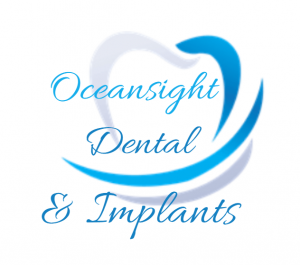Keep your straight teeth from relapsing
What are orthodontic retainers?
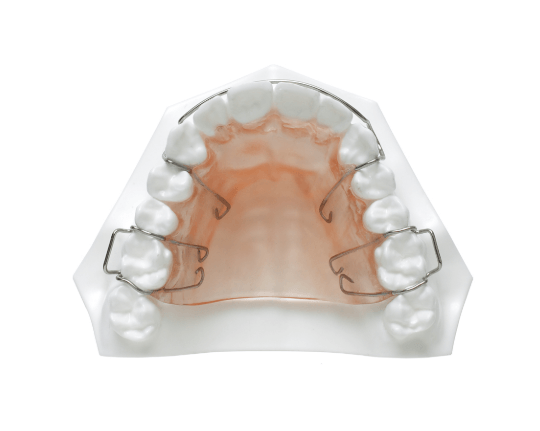
An orthodontic retainer is an appliance used to maintain your teeth position after completion of orthodontic treatment. Whereas braces and clear aligners help move and straighten your teeth, retainers help maintain your current teeth position. Typically, you receive a pair of retainers as soon as you finish with your orthodontic treatment. Be sure to wear your retainers as recommended to keep your straight smile! Otherwise, your teeth will slowly shift back to their original position, referred to as orthodontic relapse. Sometimes orthodontic relapse is so bad that you have to redo your entire ortho treatment!
What are the different types of retainers?
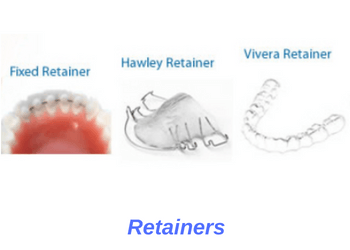
There are three types of orthodontic retainers: (a) Hawley retainers, (b) Essix (clear) retainers and (c) fixed retainers. Here's what you need to know about each type of retainer:
Hawley retainers
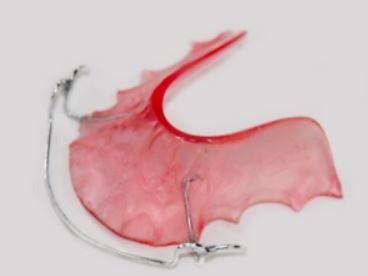
A Hawley retainer consists of a large acrylic section attached to a metal wire. The arcylic sits inside of your mouth to secure the retainer in place, while the metal wire holds your teeth in their position. Hawley retainers are removable, which means you can take them in and out of your mouth. These are a good option for teenagers who have just completed their braces treatment. You should wear your Hawley retainers all day or during the nights, as per your dentist or orthodontist's recommendation.
Essix retainers
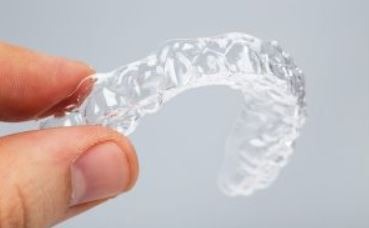
Essix retainer, also referred to as clear retainer, are made from firm, clear plastic which resembles clear aligners. Patients prefer Essix retainers to Hawley retainers because they are less visible, less bulky, and more comfortable to wear. However, clear retainers aren't as effective at long-term preservation of your tooth position. Plus, clear retainers lose their effectiveness over time and they need to be replaced every few years.
Fixed retainers (metal wire)
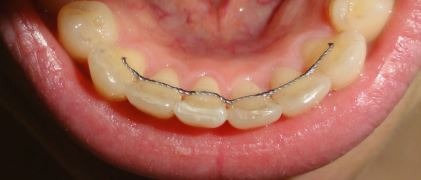
Fixed retainers are permanently glued to the back of your front teeth.Whereas Hawley and Essix retainers are removable, fixed retainers are permanently stuck to your teeth, thus the term fixed. Only your dentist can remove these retainers for you. Fixed retainers are a good option for patients who can't comply with wearing removable retainers. The big disadvantage of fixed retainers is that the teeth which they attach to become difficult to clean.
Which type of retainer is best for me?
Each type of retainer has its own advantages and disadvantages. Your dentist or orthodontist will recommend which type of retainers are best for your smile. They take many factors into consideration, such as how crooked your teeth used to be, how long your ortho treatment took, existence of wisdom teeth in your mouth, your oral hygiene, as well as other factors. For example, Hawley retainers work best for teenagers who have just finished their braces treatment. Adults who wear Invisalign® clear aligners usually get clear Essix retainers which have a similar feel to their retainers. Finally, if your ortho case was very complex, if you still have your wisdom teeth, or if you don't feel like remembering to wear your retainers, then fixed retainers might be your best option.
What are the advantages and disadvantages of removable retainers?
Removable retainers are very effective in maintaining your teeth position. Of course, that's only if you wear your retainers like you're supposed to. Compliance is key with removable retainers. Failure to wear your removable retainers will cause your teeth to shift back to their pre-treatment position. Additionally, most removable retainers lose their effectiveness over time. This means that you may have to replace your removable retainers every few years. Finally, it's not uncommon to break or lose removable retainers.
What are the advantages and disadvantages of fixed retainers?
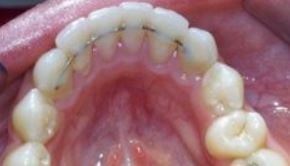
The biggest advantage of fixed retainers is that you don’t ever have to worry about wearing your retainers again. This is because fixed retainers are always stuck to your teeth. The biggest disadvantage of fixed retainers is that the teeth supporting them become very difficult to clean. If you don't diligently clean these teeth, you will develop dental cavities or gum disease. Therefore, it's very important that you clean around your fixed retainers and maintain periodic dental cleaning. Otherwise, fixed retainers can lead to gum disease and cavities on the supporting teeth.
Orthodontic retainers in San Clemente, Orange County
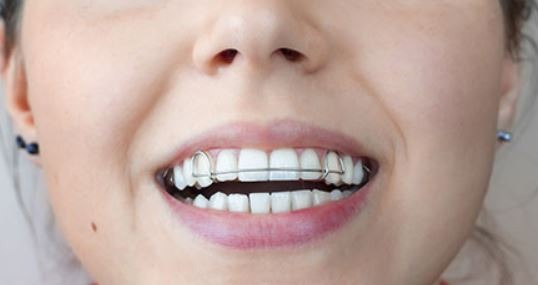
Call us to learn more about the different types of retainers. You can reach us at (949)481-2540 or book your orthdontic consult online. Our dentist, Dr. Jazayeri, will evaluate your teeth and bite relationship in our San Clemente, Orange County office. We will help you decide which type of retainers are best for your need. Don't wait until your teeth become crooked because you did't wear your retainers! Give us a call today and let us help you maintain your straight smile.
Interested in purchasing treatment directly online? Click on the link below to go to my online store now:
To learn more about orthodontic treatments click on the following links:
Definition of Cosmetic Dentistry Terminology
Bonding
Bonding is tooth-colored composite resin used to enhance the appearance of your front teeth. Cosmetic dentists use bonding to fix teeth with discoloration, close small gaps and enhance your smile. Porcelain veneers is considered a better alternative to bonding.
Ceramic Crowns
A type of dental crown which is made from zirconia ceramic. Ceramic crowns are stronger than porcelain and do not have any metal in them. Cosmetic dentists favor ceramic crowns as they are the most natural-looking crowns and are also extremely durable.
Clear Aligners
A series of plastic, firm trays used to move your teeth into their desired position. By wearing each clear aligner, your teeth move a tiny bit until they settle into their final position. Clear aligner are an alternative to braces used to straighten your teeth and preferred by cosmetic dentists whenever possible.
Composite Fillings
Please refer to white fillings.
Cosmetic Dentist
A dentist who focuses his or her practice on improving the appearance of your smile. Cosmetic dentists rely on treatments such as porcelain veneers, teeth whitening and clear aligners to fix your smile. In general, cosmetic dentists avoid using silver fillings and crowns with metal in them.
Cosmetic Dentistry
Cosmetic dentistry refers to dentistry which focuses on improving the appearance of your smile. The goal of cosmetic dentistry is to give a better looking smile. Most people seek whiter teeth and a straighter smile with cosmetic dentistry.
Crowns
A dental prosthesis placed on your teeth to bring them back to their original shape. Placing a crown on a tooth restores shape and function of your tooth. Crowns are used to restore teeth which can no longer be fixed with a simple filling. Crowns come in different shapes and are made from gold, porcelain-fused-to-metal (PFM) or ceramic material.
Fillings
A type of dental restoration used to fix small cavities or broken teeth. Fillings come in different types including gold, silver (Amalgam) and white (composite resin) fillings. Cosmetic dentists only use white fillings as they are safe and aesthetically superior to other options.
Lumineers
A porcelain veneer alternative treatment which involves no tooth removal. However, not everyone qualifies for Lumineer treatment
because there is no tooth structure removed. Talk to your cosmetic dentist to see if you’re a candidate for Lumineers.
Porcelain-Fused-to-Metal (PFM) Crowns
A type of dental crown consisting of metal on the inside and porcelain on the outside. The metal provides strength while the porcelain provides natural tooth-like appearance. PFM crowns don’t look as good as ceramic crowns do and are generally not recommended for restoring your front teeth.
Porcelain Veneers
Porcelain veneers are tiny-porcelain coverings which are placed on your front teeth to enhance their appearance. Porcelain veneers are among the most popular cosmetic dentistry treatments used in smile makeover treatment by cosmetic dentists.
Smile Makeover
Improving the appearance of your smile to give you that youthful, perfect smile which you’ve always wanted. Smile makeover addresses your underlying dental conditions and focuses on whitening and straightening your teeth for a dazzling smile.
Teeth Whitening
Any procedure used to brighten your teeth. Teeth whitening usually works by breaking down internal tooth stains. Cosmetic dentists offer two types of teeth whitening procedures: in-office teeth whitening and take-home whitening trays with bleaching gel.
White Fillings (Composite resins)
White fillings are used to repair teeth with cavities or fractures. White fillings are made from composite resin, which does not contain any metals. White fillings come in a variety of colors to best match your existing tooth color.
Oceansight Dental & Implants
General, Cosmetic & Implant Dentistry
Office of Ali John Jazayeri
133 Avenida Granda
San Clemente, CA 92672
